There are amazing hikes in Valley of Fire – Prospect Trail being one you may not know. If you stop in at the Visitor Centre and ask about hikes, they’ll send you to Mouse’s Tank. Good short hike for hottest months of the year, but what about cooler winter months when you can hike further and leave the masses behind? It’s hard to escape the crowds in this uber popular Nevada state park (blame proximity to Las Vegas). Which Valley of Fire State Park hikes go the distance? Read on!
Disclosure: This post contains affiliate links. If you buy something from one of our affiliates, we receive a small commission at no extra charge to you. Thanks for helping to keep our blog up and running!
Table of Contents
Off-the-Beaten Path in Valley of Fire on Prospect Trail and More
I’m not talking about wandering through desert crushing delicate cryptobiotic soil! Going off-the-beaten path means finding trails that are less popular. It means looking beyond the obvious.
Important Note: These trails are not recommended for the late spring and summer season (May-Sept). Temperatures rise well above 95 F (35 C). Lack of shade and extreme temperatures can be deadly.
Here are 3 longer trails where you can escape the crowds in Valley of Fire State Park in the winter and early spring months:
- Prospect Trail
- Charlie’s Spring
- Pinnacles Trail
Ever heard of “National Take a Hike Day”? Read more here!
Hike Valley of Fire’s Prospect Trail
Valley of Fire is an extremely popular destination due to its amazing geology, prehistoric and historic treasures, and its proximity to Las Vegas. A day trip to this Nevada state park is on the must-do lists of many Vegas visitors. But what if you’ve chosen to make the park a destination for multiple night stay in your RV and you want to hike to see more than the prehistoric petroglyphs at Mouse’s Tank?
Prospect Trail is a prime choice for winter months. You will need two vehicles (we used our motorbike and truck) to hike the trail from start to finish one-way. The trailhead starts off of the White Domes loop trail located 5.5 mi (9 km) from the Visitor Centre on the White Domes Road.
Heading out from the end of the parking lot, it quickly obvious that hiking Valley of Fire’s Prospect Trail will not be a straightforward, roughly downhill hike. There is so much to see and so many places to scramble up onto slickrock for a view – and we’re not even 10 minutes down the trail! We pause briefly at the remains of the old movie set before heading into the short – but photoworthy – slot canyon.
Officially on Prospect Trail
As you head off at the signed junction, the trail snakes along massive Aztec sandstone outcrops tucked in among gray and tan-coloured limestone mountains. Cactus blooms. Brittlebush is everywhere. Chuckwallas sun on rocks. Swifts fly overhead. Lots of arches and faces to find in the rock, but not another person on the trail except for us!
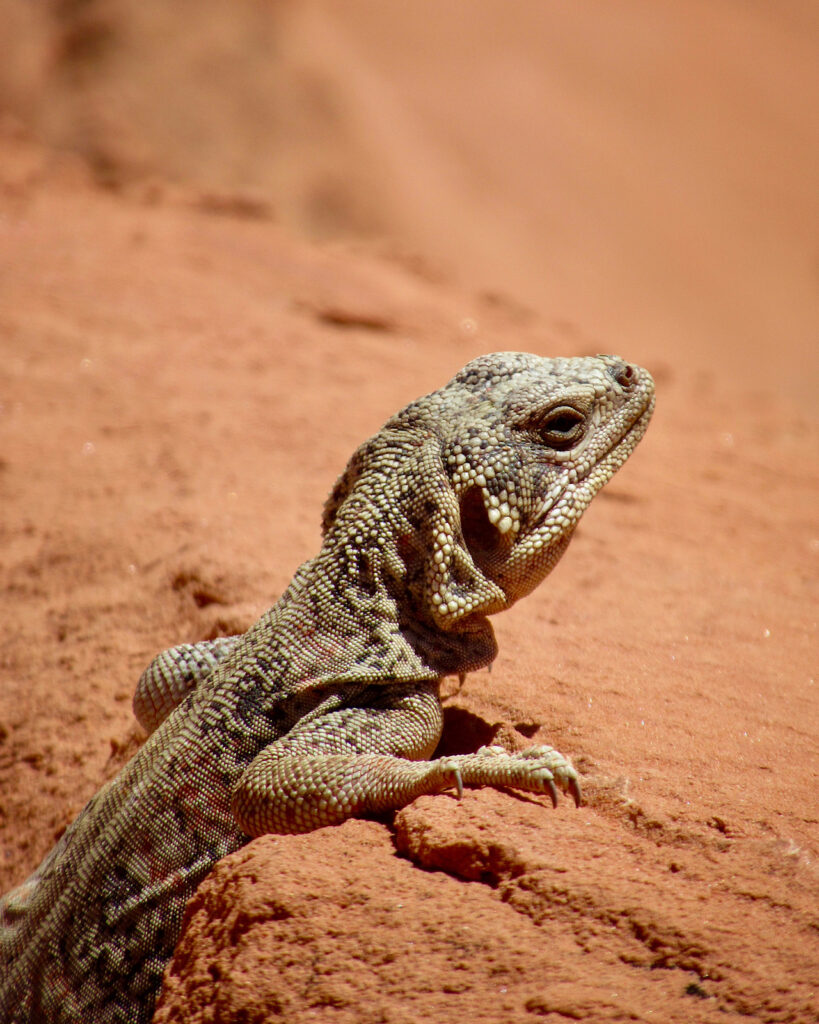
According to the park map, the distance is 4.6 mi (7 km) one-way. The trail sign where Prospect takes off from the White Domes loop trail says 5.5 mi (9 km) one way to main road. Trust the latter. The grade is roughly 5.5%. Of this, 748 ft (228 m) reaches grades of 21-46%. Expect a few hills – in fact, more up than anticipated on a downhill hike!
The trail surface starts out with a bit sandstone slickrock. There is a lot of cobbly rock and sand in middle section and it ends on sand and soil as you approach the main road. A perfect winter day’s hike!
Try a 7-day free trial of AllTrails+!
Explore Charlie’s Spring
According to the map we bought at the Visitor Centre, the hike to Charlie’s Spring is 5.5 mi (9 km) one way. The park descriptions say 4.7 mi (7.5 km). According to our measurements, it was slightly less than 4 km to the spring from the trailhead near the historic marker!
Don’t get too hung up on distance, it’s an easy – if sandy – slightly downhill walk with an average grade of 1.9% to the spring. Note that there is a short 320 ft (97 m) section where the grades reach 11-23%.
What You’ll Discover on Charlie’s Spring Trail
The trail is not marked except near Clark’s monument. We simply followed the deep sandy wash. Not a soul in sight the entire time we were out! Lots of burro tracks and droppings, sheep tracks and droppings, coyote tracks, lizard tracks and one lone snake track. We climbed up onto an old road at 2 mi (3.3 km) before dipping back down into the wash just above Charlie’s spring.
Less than 0.6 mi (1 km) downstream a newer gravel road crosses the wash. A roadrunner raced across the dry streambed. At 3.8 mi (6.2 km) we can see the Highway 169 bridge. Time to turn back!
On the way back we continued up the wash past the spring instead of climbing up on old roadway. The red rock canyon narrows and has an easy to climb over a low dryfall right below the old road.
It’s a long sandy walk, not nearly as scenic as Valley of Fire’s Prospect Trail, but the springs offer more possibility of wildlife sighting. The lone palm tree – along with the lush vegetation around the spring – is a photogenic sight. Birding is probably phenomenal in early spring!
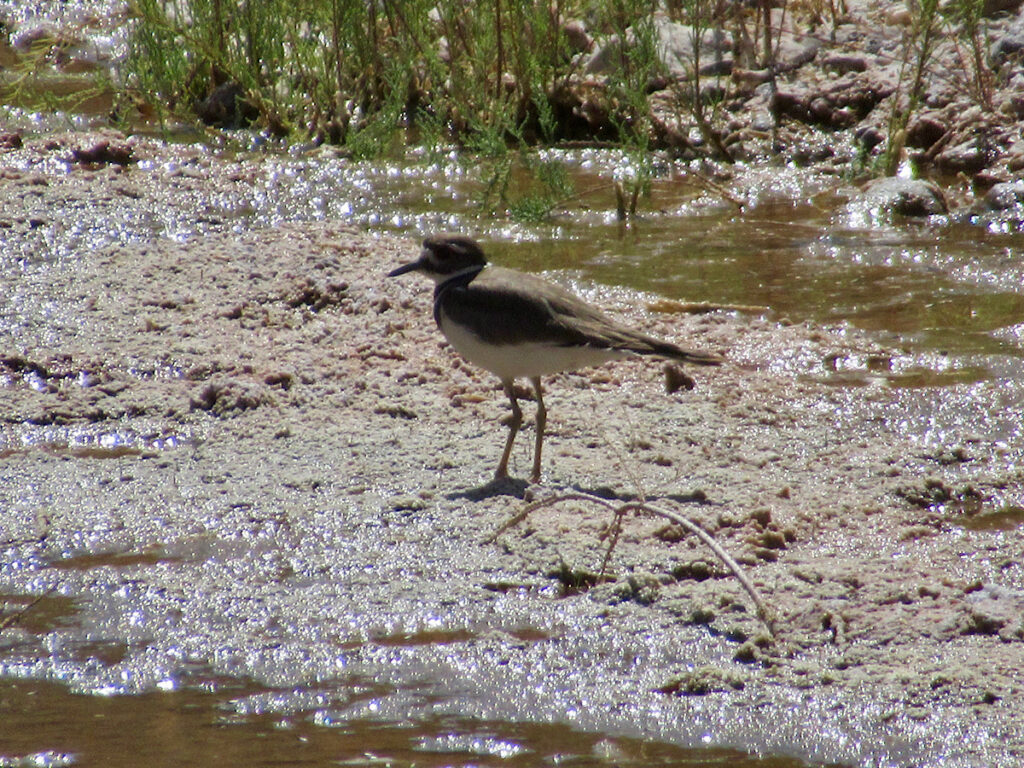
A Little History
There is evidence from archaeological finds that people travelled through Valley of Fire at least 11,000 years ago. Prehistoric tribes of the Basketmaker culture and later Early Pueblo culture (about 2,500 years ago) carved petroglyphs into the rocks.
Prospectors, miners and settlers travelled through the area in the late 1800s. Around the end of the century, Civil War veteran John J. Clark travelled in Valley of Fire on his way to California. He was found dead under his buckboard. Clark presumably died from dehydration. A white memorial was later erected in his memory.
The Arrowhead Trail – connecting Salt Lake City with Los Angeles – was originally built through Valley of Fire in 1912. Twenty years or so later, the Civilian Conservation Corps (CCC) built the first campgrounds and park facilities. Valley of Fire became Nevada’s first state park in 1934 (although it wouldn’t receive legal status until 1935).
As hard as I’ve looked, I’ve yet to uncover who was “Charlie” of “Charlie’s Spring.” I’ll keep looking, but if you know anything of this historical name, please leave a note in the comments below!
As Good as Valley of Fire’s Prospect Trail: Wander up Pinnacles
Our final “long” hike in Valley of Fire was Pinnacles Loop. Map says it’s a 4.5 mi (7.2 km) loop with a typical grade of 4.8% (although there is a short 298 ft / 91 m section with grades of 21-47%).
We headed out from our campsite in Arch Campground, walking down the road towards Atlatl Rock and the trailhead. Our total hike around the loop and back to camp was mi (9.7 km). Pinnacles Trail sign says 4.4 mi (7.1 km) – seems almost right!
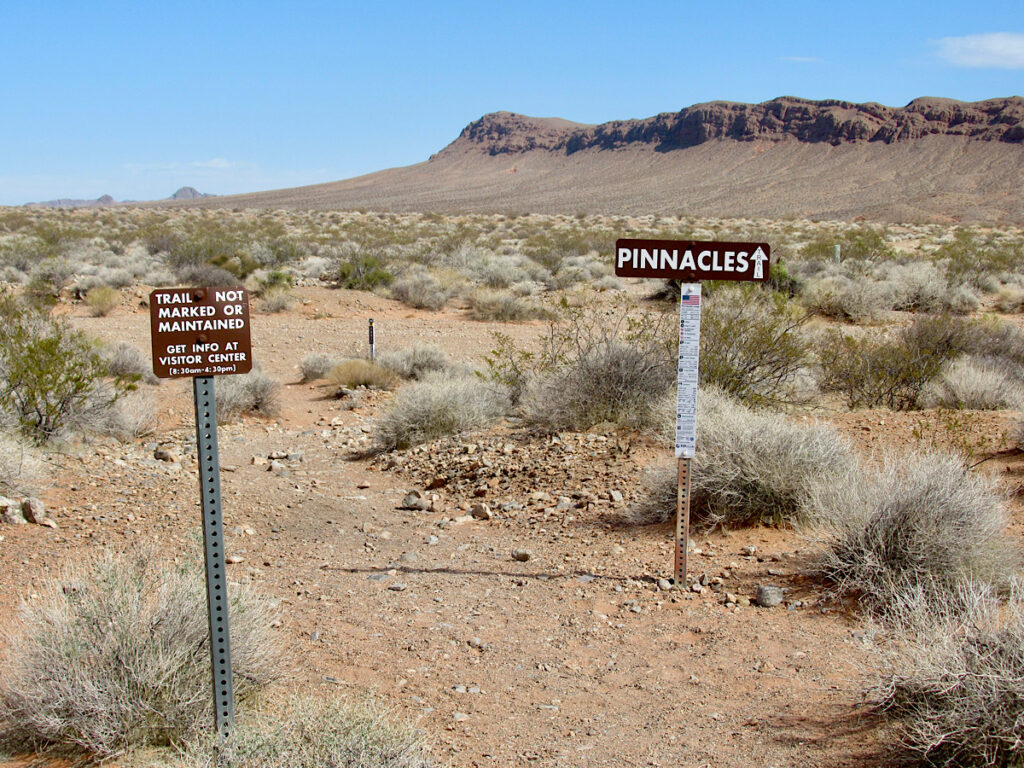
Heading Out on Pinnacles Trail
Walk up fine gravely wash was like walking in sand, except it takes longer to fill your boots! Bit of a slog and tough on the knees. At White Rock our map says distance should be 1.5 miles. Our measurements come out at mi (1 km) Silly map!
Up through gap and first glimpses of red rocks to northeast. Rounding the corner a red sandstone outcrop appears. The trail heads right, climbing up onto low pass.
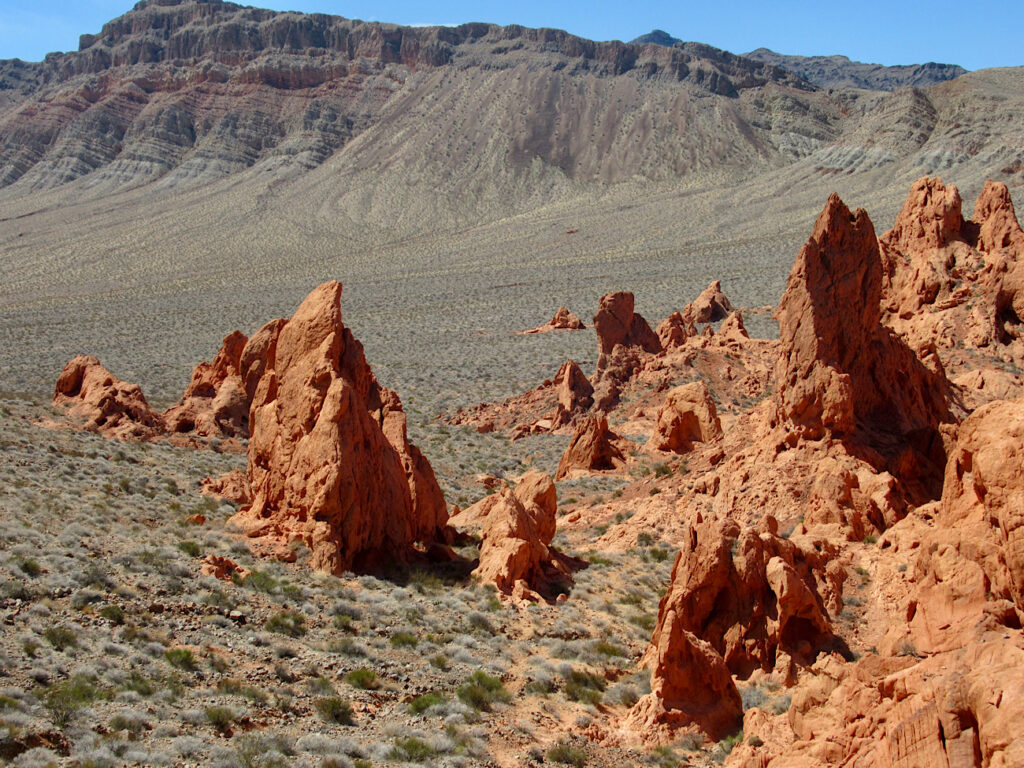
We’re just heading over into the rocks to get some pics when a desert bighorn ram appears. It stands watching us, unconcerned as we slowly approach. Suddenly, a second even larger ram appears. Both pose sweetly for awesome pics before watching us dip down to the wash.
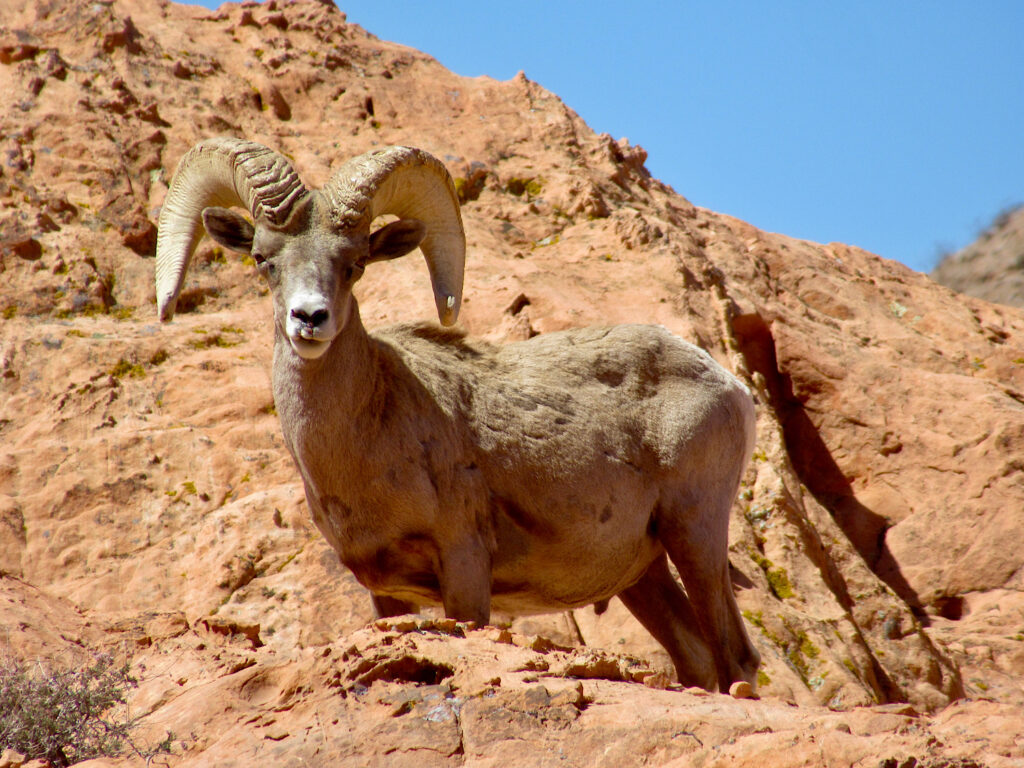
The trail loops around mountain dipping into a wash filled with fine brown rock that is more compacted and much easier to walk on than loose rubble on the other side. As the terrain opens up again, the trail leaves the wash and angles across the flats back to the trailhead. It’s way better walking this way than the initial section up the wash. Beavertail prickly pear, fishhook cactus, hedgehog cactus, cholla – more cactus here than seen elsewhere in the park.
When You Go to Hike Valley of Fire and Prospect Trail (And Camp!)
Valley of Fire’s Prospect Trail was our “long distance” favourite for scenery and solitude. It was followed closely by the Pinnacles Loop. Charlie’s Spring was third but still a good walk!
Valley of Fire State Park is located in the Mojave Desert approximately 55 mi (90 km) northeast of Las Vegas off Interstate 15.
The park has two campgrounds with a total of 72 campsites. Each campsite has tables and grills. There is water and pit toilets available in Arch Campground; RV hookups and showers are available in Atlatl Rock Campground.
All campsites are first-come, first-served (no reservations). There is a camping limit of 14 days in a 30-day period. Campers must pay camping fee plus state park entrance fee (check the park’s website for current costs).
Heading north from Valley of Fire for more outdoor adventures? Check out these posts about Exploring the Ghostly Remains of St. Thomas, 3 Cool Things to Do in Overton, and Put This in Your Pocket: Nevada’s Mount Irish Archaeological Site, and Outdoor Adventures while camping in Snow Canyon State Park.
Head south from Valley of Fire? Check out 11 Amazing Things to Do in Boulder City | Nevada and Nevada: Hiking Grapevine Canyon
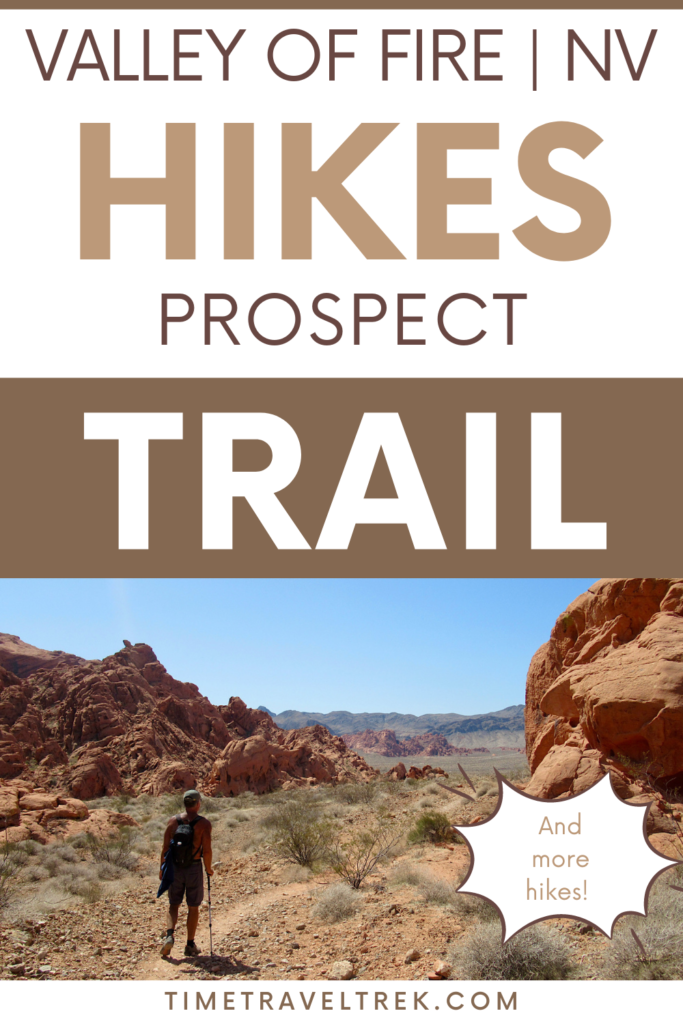
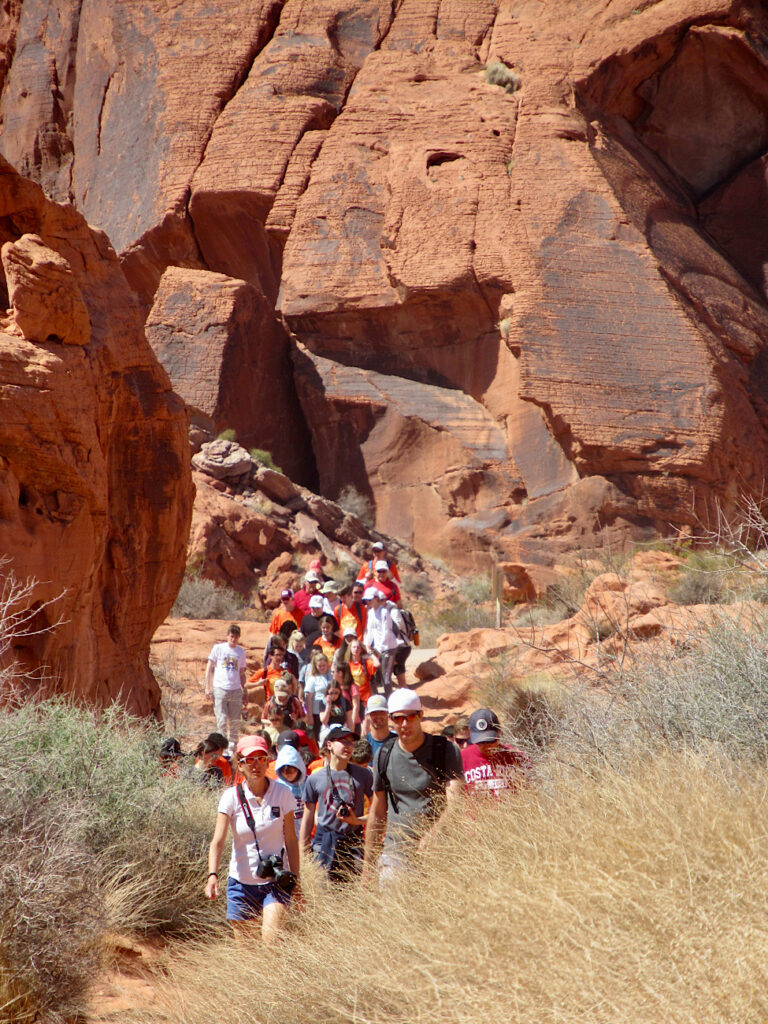

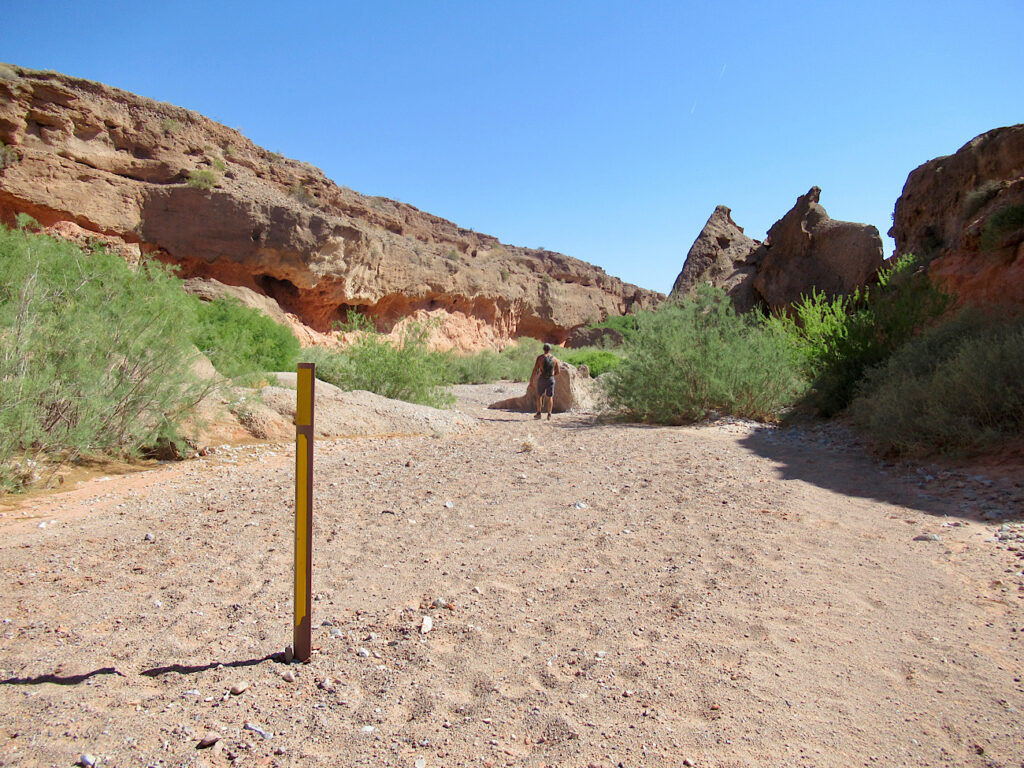


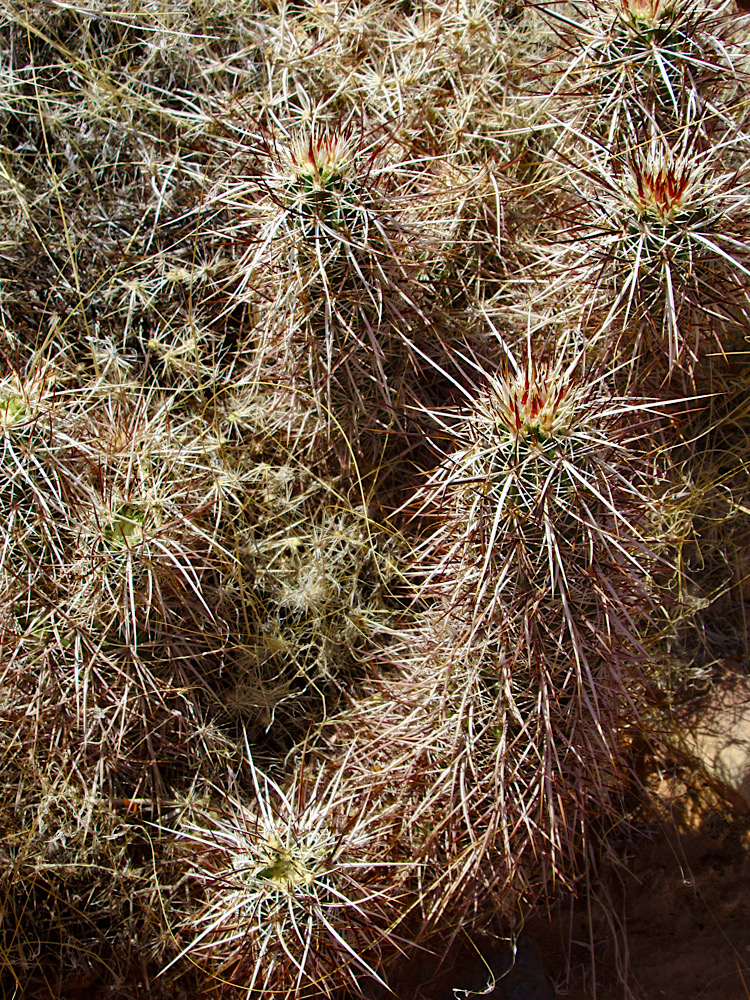

Leave a Reply